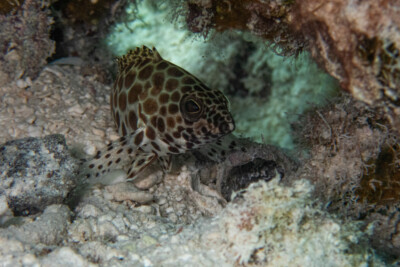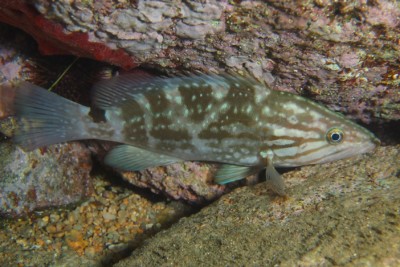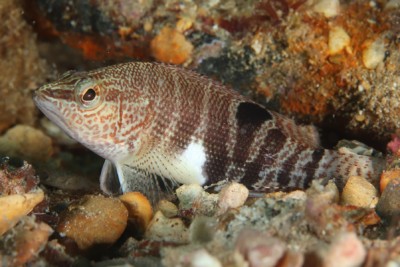humpback grouper
| Family | Serranidae |
|---|---|
| Genus | Cromileptes |
| IUCN category (World) | NE |


Introduction
Cromileptes altivelis, commonly known as humpback grouper, is a salt water fish.
This sheet is currently being prepared. The texts currently proposed come from our data model or are being drafted. To request priority for this content, you can write to us HERE.
Who is it?
Morphology
-
Average size50 cm
-
Maximum size70 cm
-
Longevity50 year
-
Patternponctuations
-
Average size50 cm
-
Maximum size70 cm
-
Longevity50 year
-
Patternponctuations
How to recognize This fish ?
The humpback grouper measures around 50 cm. The dominant males can however reach 70 cm. This fish is bicolore with a predominantly noir, blanc, beige and gris body. The also has noir ponctuations.
Sexual dimorphism
The adult male is bigger than the female.
Behaviour & Life cycle
-
dietcarnivorous
-
Sociabilitysolitary
-
territorialNo
-
Way of livingdiurnal
The humpback grouper is a fish solitary naturally found at mid-depth and near the bottom. This species is carnivorous .
Although the humpback grouper is non-territorial, it is sometimes aggressive towards other species.
Reproduction
-
Reproductionovipare qui pond en eau libre
The humpback grouper is a fish ovipare qui pond en eau libre. This fish protects its eggs from nearby predators.
Harmless species
This species does not represent any particular threats to humans when encountered in its natural environment.
Origin and distribution
What is its habitat?
Natural environment characteristics
-
Temperature25 - 29 °C
-
Depth5 - 25 m
Biotope presentation
The humpback grouper is most often found at a depth between 5m and 25m. However, it is not impossible to find this species at other depths.
Species of the same biotope
To go further
Sources & Contributions
Participation & Validation
The Fishipedia team and specialist contributors are committed to providing high-quality content. However, although the information comes from scientific sources or testimonials from specialists, the cards may contain inaccuracies.

Adrien Falzon

Théo Guillaume
Translation
Translation done with the valuable contribution of our translators, who make this information available to a wider audience. We sincerely thank them for their commitment.
Bibliographic references
- - GBIF
- - Biologie de quelques espèces de Poissons du lagon néo-calédonien. - Gérard Loubens - Centre Océanographique de Bretagne - 1980.
- - GROUPERS OF THE WORLD: A FIELD AND MARKET GUIDE - Matthew T Craig - Yvonne J Sadovy de Mitcheson - Phillip C Heemstra - NISC - 2011.
Scientific partners
Tags
Species of the same family
Species of the same biotope




































